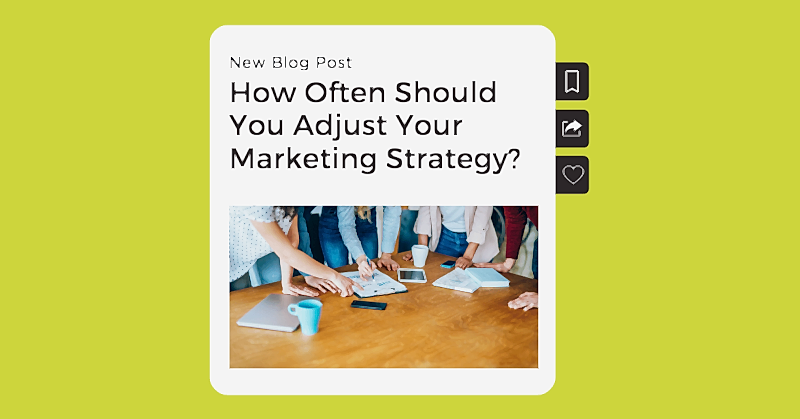You always want to stay one step ahead of your competition. But how on earth do you do that when they seem to be dominating online? What is it about their pages that pop? Why can’t you seem to get any engagement, let alone conversions?
One powerful tool in your arsenal is competitive gap analysis – a strategic approach that can help you identify opportunities, refine your tactics, and gain a significant edge online and in the market. In this comprehensive guide, we’ll explore how to conduct a thorough gap analysis against your competitors and what actions you should take based on your findings.

Understanding Competitive Gap Analysis
Competitive gap analysis in social media marketing is the process of evaluating your organization’s social media performance against your competitors. This analysis helps you identify areas where you’re falling behind, where you’re leading the pack, and where there are untapped opportunities in the market.
The key components of a competitive gap analysis include:
- Identifying your competitors
- Analyzing their social media presence
- Comparing your performance to theirs
- Identifying gaps and opportunities
Conducting a regular gap analysis can reap several benefits:
- Improved strategic planning: Understanding your position in the market allows for more informed decision-making.
- Better resource allocation: You can focus your efforts and budget on areas that will yield the highest return.
- Enhanced competitive advantage: By addressing weaknesses and capitalizing on strengths, you can outperform your rivals.
Step-by-Step Guide to Conducting a Gap Analysis
So how do you best begin? What does this mean for you and your team as you review your online presence?

#1 Identify Your Competitors
Start by creating a list of your competitors. This should include:
- Direct competitors: Businesses offering similar products or services to the same target audience.
- Indirect competitors: Companies that solve the same problem but with a different approach.
- Aspirational competitors: Industry leaders you aim to mimic or surpass.
#2 Choose Key Metrics to Analyze
Select relevant metrics that align with your business goals. Common metrics include:
- Follower growth rate
- Engagement rates (likes, comments, shares)
- Content types and posting frequency
- Ad performance (reach, click-through rates, conversions)
#3 Collect and Analyze Data
Use social media analytics tools like Sprout Social, Hootsuite, or native platform analytics to gather data. Go ahead and create a comparison spreadsheet to visualize how you stack up against your competitors across various metrics. Be detailed and see if you’re able to take some of the hard numbers and trend them out. Remember, what gets measured, get’s improved.
#4 Identify Gaps and Opportunities
Analyze your data to pinpoint:
- Areas where competitors outperform you
- Areas where you have an advantage
- Untapped markets or content types that neither you nor your competitors are fully leveraging
This part of your review is CRUCIAL. Be as detailed as possible when looking across trends. Look at details even with keywords your competitors use or don’t use. Look to see what content types you are or aren’t including. Look to see what topics you are or aren’t including that might be hurting your online reputation. It all matters in seeing what works and understanding where YOU may have something that your competitors don’t.
Taking Action Based on Gap Analysis Results
Once you’ve identified the gaps, it’s time to take action. Here are some key areas to focus on:
Improving Content Strategy
If your analysis reveals that certain content types are underperforming compared to your competitors, it’s time to reassess your approach. For instance, if you notice that your competitors are gaining significant traction with video content while your text-based posts are lagging, consider incorporating more video into your strategy.
Enhancing Engagement Tactics
Look at how your competitors are fostering community engagement. Are they responding promptly to comments? Hosting live Q&A sessions? Leveraging user-generated content? Implement the strategies that are working well for them while adding your unique twist.
Optimizing Ad Campaigns
Analyze your competitors’ ad strategies. Are they targeting specific demographics that you’re overlooking? Are they using ad formats that you haven’t explored? Use these insights to refine your targeting and experiment with new ad types. Why is this important? A report by Statista shows that digital ad campaign spending is projected to reach $835.82 billion by 2026, emphasizing the growing importance of effective ad strategies.
Exploring New Platforms or Features
If your competitors are finding success on platforms where you’re not present, it might be time to expand your social media footprint. Similarly, be quick to adopt new features on existing platforms to stay ahead of the curve.
Competitive gap analysis is not a one-time task but an ongoing process that should be integrated into your social media strategy. By regularly assessing your position relative to competitors and taking data-driven actions (even if it’s just once a year), you can continually refine your approach and stay ahead.
Remember, the goal isn’t to simply imitate your competitors but to learn from their successes and failures while carving out your unique position in the market. Use the insights gained from your gap analysis to inform your strategy, but always stay true to your brand’s voice and values.
Now that you’re armed with the knowledge to conduct a thorough competitive gap analysis, it’s time to put these strategies into action. Start by identifying your key competitors and gathering data on their social media performance. With persistence and a data-driven approach, you’ll be well on your way to dominating your niche in the social media sphere!








